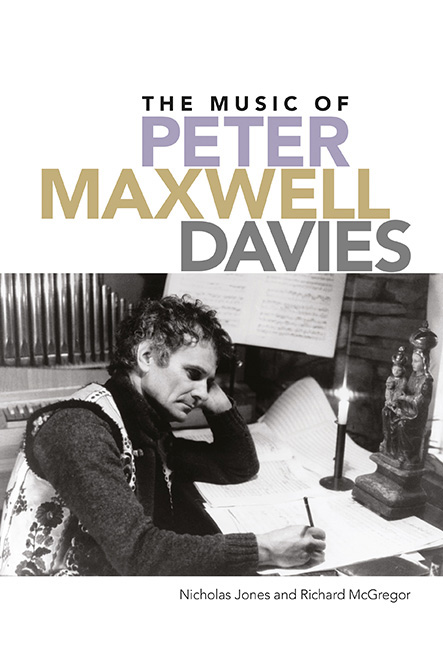Book contents
- Frontmatter
- Dedication
- Contents
- List of Illustrations
- Acknowledgements
- Prelude
- 1 Biography, Stylistic Development, Autobiography
- 2 Compositional Technique and Process
- 3 Genre
- 4 Form and Architecture
- 5 Tonality and Texture
- 6 Allusion, Quotation, Musical Critique
- 7 Landscape and Place
- Postlude
- Catalogue of Works
- Select Bibliography
- Index of Works by Peter Maxwell Davies
- General Index
4 - Form and Architecture
Published online by Cambridge University Press: 27 March 2020
- Frontmatter
- Dedication
- Contents
- List of Illustrations
- Acknowledgements
- Prelude
- 1 Biography, Stylistic Development, Autobiography
- 2 Compositional Technique and Process
- 3 Genre
- 4 Form and Architecture
- 5 Tonality and Texture
- 6 Allusion, Quotation, Musical Critique
- 7 Landscape and Place
- Postlude
- Catalogue of Works
- Select Bibliography
- Index of Works by Peter Maxwell Davies
- General Index
Summary
The evolution of Peter Maxwell Davies's ‘harmonic, rhythmic and formal/ architectural thinking’ is clearly articulated in an article that the composer wrote in April 2015. In it, he declares that, in the 1950s, upon reading a number of analytical writings by various commentators, he found those by ‘Ratz and Schenker much more liberating than […] analyses by Messiaen and Boulez; the former drove home the indivisibility and interdependence of all musical parameters, long and short term’. Later, whilst studying with Goffredo Petrassi in Rome in 1957–8, he explains that he was encouraged to read the theoretical writings of Schoenberg and in particular Luigi Rognoni's Espressionismo e dodecafonia, ‘which profoundly influenced my understanding of form and architecture forever’, leading him ‘to think anew […] with more insight than previously about the works that I believed I knew’. He then proceeds to offer several examples of this new understanding, including J. S. Bach's Invention in E minor, BMV 778 – ‘whose “form”, academically perceived, is obvious, but whose architecture is an expression of the Holy Trinity’ – and Beethoven‘s Eroica Symphony:
The first movement is obviously in sonata form, with a coda, but the first subject is only stated completely – its destiny fulfilled – in that coda, its whole course being determined by the (still always surprising!) C♯ in bar 7. The ‘form’ is one thing, the ‘architecture’ a complete different matter, and they create huge tensions between them. Similarly, the finale is a set of variations, but the ‘theme’ is hardly a theme as such, but the widely-spaced notes delineate a tonal space, or rather, a sequence of holes, between the tonic E♭ and the dominant B♭, which is gradually filled in as the ‘variations’ progress […] – with the ‘Prometheus’ melody along the way – once again to achieve its fulfilment and apotheosis at the movement's close.
- Type
- Chapter
- Information
- The Music of Peter Maxwell Davies , pp. 142 - 178Publisher: Boydell & BrewerPrint publication year: 2020



